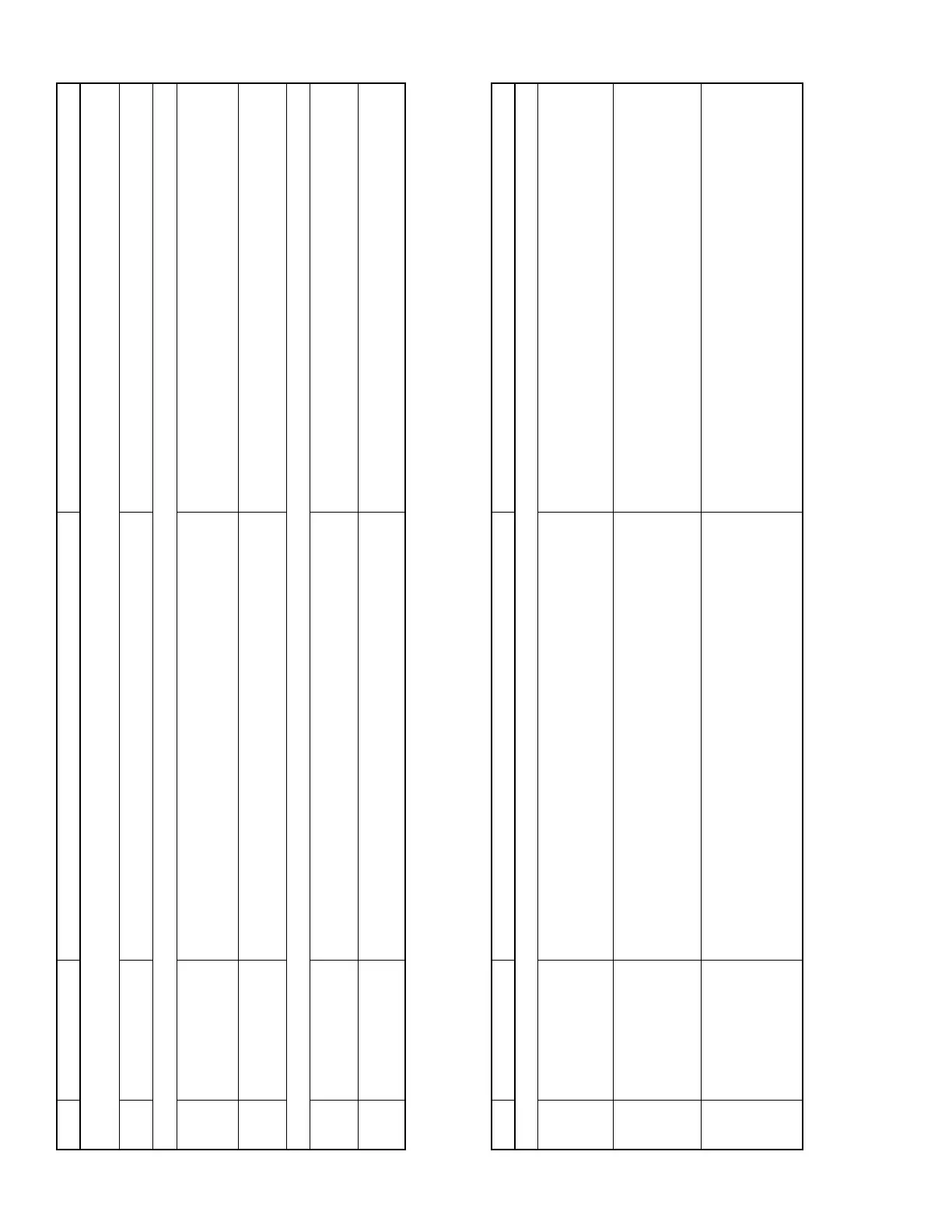TP-6953 7/19128 Section 7 Troubleshooting
Step Potential Cause
Explanation Troubleshooting
Fault: Bus Sensing Not Connected
(Continued)
3 The line circuit breaker
is open
The line circuit breaker (at the generator) is open, disconnecting the output from
the generator from the line side of the paralleling breaker.
Verify that the line circuit breaker is closed.
Fault: Bus Sensing Connected to Generator Side of Breaker
1 Bus metering is
connected to the
wrong side of the
paralleling breaker
The controller sees the bus voltage always matches the generator voltage,
even when the breaker contacts indicate that the breaker is open.
Verify the bus metering is connected on the load side of the paralleling
breaker.
2 Breaker is c losed and
status feedback is not
connected
The controller sees that the bus voltage always matches the generator voltage,
even when the breaker contacts indicate that the breaker is open.
Verify the paralleling breaker control wiring is connected correctly and the
status feedback is connected to an “A” contact.
Fault: Failure to Open
1 Wiring between CB trip
relay and trip coil is not
connected
The CB trip relay is releasing, but the coil in the breaker is not energizing,
hence the breaker is not opening.
Verify wiring to the trip coil (A4) is connected correctly.
2 CB trip relay is not
receiving 24V power
The CB trip relay is releasing, but there is no voltage to apply to the trip coil.
This is most likely to occur when the generator has a 12V battery and there is
an external battery bank to operate the circuit breaker.
Verify the CB trip relay has a 24VDC supply which is common to the CB
close relay and charge motor.
7.8 Paralleling Troubleshooting—When Running in AUTO
7.8.1 Faults Shown
Step Potential Cause
Explanation Troubleshooting
Fault: Generator Phase Rotation Mismatch
1 This generator is wired
with the opposite
phase rotation of all
the other generators
on the paralleling bus
The controller has validated that the bus metering is accurate relative to this
generator, if the bus phase rotation is backwards to the generator, the phase
rotation must really be different.
Verify wiring between this generator and the paralleling breaker. It may be
necessary to reverse two phases between the generator and the paralleling
breaker and then to reverse the sensing at the bus to match. This generator
should be started and closed to a dead bus again to validate the changes.
2 The wiring between the
paralleling breaker and
the paralleling bus is
incorrectly connected
(two phases are
reversed)
Voltage from other generators comes into this generator as incorrect phase
rotation because the wiring connections to the paralleling bus are reversed,
even though the rotation of the other generators is identical to the rotation of
this generator.
Verify wiring between the paralleling breaker and the paralleling bus. It may
be necessary to reverse the connection of two of the leads. This generator
should be started and closed to a dead bus again to validate the changes.
3 The generator which is
connected to the
paralleling bus has the
opposite phase
rotation of this
generator and all
others
Voltage from the other generator comes into this generator as incorr ect phase
rotation because the wiring connections from the other generator to the
paralleling bus are reversed, even though the rotation of the other generators is
identical to the rotation of this generator.
Verify wiring between the paralleling breaker and the paralleling bus of the
other generator. It may be necessary to reverse two phases between the
paralleling breaker and the paralleling bus on the other generator. The other
generator should be started and closed to a dead bus again to validate the
changes.

